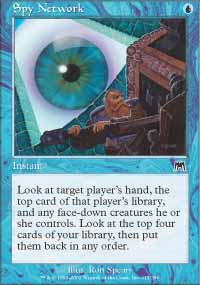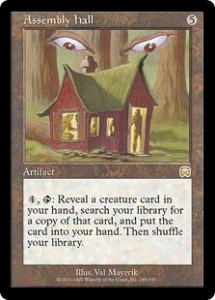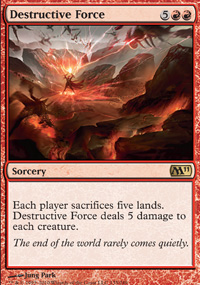Are you a Quiet Speculation member?
If not, now is a perfect time to join up! Our powerful tools, breaking-news analysis, and exclusive Discord channel will make sure you stay up to date and ahead of the curve.
Hi everyone, and welcome to Whinston’s Whisdom. I hope you all enjoyed my last article on Quiet Speculation, and I’m glad to be back writing again. While last week’s prediction about Aluren becoming the runaway success story of Columbus wasn’t on the mark, it still put up a solid showing, so I wouldn’t be selling off those Alurens just yet. Today, however, I want to discuss a different issue, still central to increasing your profit margin.
One of the most overlooked tools in a seller’s inventory is the ability to use good customer service to encourage repeat buying. Improving your customer support network will give customers an incentive to buy from you again, increasing both your number of customers, and profits. So today we’re going to look at some ways to build a better customer service network.

Be easy to contact:The first rule of a good customer service network: make sure your customers can find you. Whether through Facebook, AIM, phone or even Ebay feedback, if your customers can’t contact you, here’s a problem. A lack of contact between seller and buyer can lead to many problems, such as one party or the other suspecting a shady deal or scam. If there’s a delay in payment or a late shipment, it’s critical to communicate this to your counterpart, avoiding a messy disagreement. Communication between buyer and seller is also important in order to give your counterpart feedback. By receiving feedback, a seller is able to know how to improve their customers’ experience, and increase the likelihood that these customers will purchase from them again. When selling over Ebay, one feedback I received asked me to wrap the cards inside my letter rather than having them in an envelope side by side. While this is such a small issue, correcting it in my future orders helped me retain this buyer, and increase the size of my market.
Be friendly: Nothing turns a buyer off more than a sharp or mean vendor. When selling, treat every customer like they are your only one, and create a friendly and peaceful environment for them. This is harder to do when dealing online as the connection is much less personal, but it is still very possible. Don’t rush a buyer for payment, don’t badger them about shipping details if they haven’t given you any yet, and generally, treat them as you would want to be treated. Whenever I am berated by a seller for late payment or some similar offence, I know I don’t want to be dealing with this person anymore. But when I deal with a seller that deals with hitches in a graceful way, and treats me with respect, I am infinitely more likely to buy from them again.
Be responsible and accountable: One of the ways to build up a loyal buying base is to conduct yourself in a responsible and accountable way during your transactions. There are several ways to do this. First, ensure that every item you ship will arrive in the best condition possible. Use hard plastic sleeves to prevent cards from being bent, and padded envelopes to further protect the contents. This will make sure you can maximize your profits, as you will be paid for all the cards you ship out, which won’t happen if they are consistently damaged. On the other hand, if a card is damaged in transit you must take responsibility for that. If the buyer can demonstrate acceptable proof that the cards arrived damaged, while it is not necessary to cancel the entire sale, a discount for the customer can go a long way to preserving good relations. When I ordered a playset of Great Sable Stags from Ebay just after the release of M2010, they arrived bent. I talked to the seller and he took off about 40% of the cost from my order. This seller recognized that your reputation is far more important than the money you would have to return in a refund. Another critical way to conduct yourself well as a seller is to be entirely honest in your practices. Too many times, I have placed large orders with sellers, and then when the value of those cards increases, the cards have mysteriously “gone missing”, or the inventory “had not been updated” when my order was placed. In these cases, the sellers placed a short term profit over their reputations, and this will hurt them in the long run. When a seller cannot reliably deliver the promised goods, buyers are less likely to buy from them again. Instead of simply not delivering orders, it would be a wiser strategy to limit orders from a single source to only 4 copies of a card. This gives you a way out of this situation without defaulting on an order. [Dear sellers: cancel orders, and you will get a bad, bad, bad reputation. I promise. --kbr]

Create a community: Currently, the biggest online card stores have been quite adept at creating communities of buyers that return to the same stores time and time again out of loyalty. Brand loyalty is a surprisingly powerful force, that when tapped into, will help you maintain a larger market of buyers. Creating a community requires manipulating several intangibles within a buyer’s subconscious. To start, it is very advantageous to have your own website to sell from, instead of using Ebay, Bid Wicket, or some similar selling source. Creating your own website gives you control over the appearance and content therein. Once you have your own website, an effective way to build up a community is to get buyers more involved in the website and your store as a whole. Whether through posting community articles, having a monthly raffle, or a rewards program (see below), buyers should have a good reason to come back to your site multiple times.
Reward repeat buyers: While this could be seen a s a subset of the “create a community” section, I feel like this is important enough that it should stand on its own. One of the things the average Magic player likes the most is free stuff. Creating a rewards program that scales upward for repeat buyers encourages more people to purchase from you. There are several ways to implement this rewards program however. The simplest is to simply include free cards with every order, with more cards for larger orders. While this doesn’t necessarily encourage multiple orders, because the free cards to scale up with each order, it does promote larger ones. A more effective strategy, I feel, is to use a points based system, giving away rewards once a buyer reaches a certain level of points. Prizes can be anything from product, to store discounts, to raffle tickets. Whatever the reward given out, buyers will recognize the value that you place on their business, and so be encouraged to continue buying from your store. That’s all I’ve got on this particular topic for today. I hope this has helped you recognize the necessity of an effective customer service network, and the importance of good customer relations. If implemented correctly, the strategies above will help to both increase the size of your buying market and the number of buyers who return to you over other dealers. And now…

of the week: Destructive Force
While currently the Standard metagame is scattered, with no one archetype reigning supreme, one of the many decks that have done well at Amsterdam PTQs has been RUG mana ramp, using Primeval Titan alongside Wildfire 2.0 to decimate an opponent’s mana and board, while keeping its own resources intact. While at the moment this deck is not even close to the best or most popular, let’s take a moment to think about Standard after Alara block rotates out. We’ll be able to bid farewell to Jund, Naya, and a host of other competitive decks which lose too much in the rotation to stick around. RUG Ramp, on the other hand, looks like it will be sticking around. At Pro Tour San Juan, several writers from Channelfirebal.com made top 8 with Zendikar Block Constructed versions of RUG Ramp, and it is more than possible to port this archetype into the Zendikar-M2011-Scars of Mirrodin Standard format. Given this, Destructive Force could prove invaluable to this archetype. While it’s companion, Primeval Titan also looks to be a powerful force in this new format, it’s high cost at the moment means that it is harder to pick up multiple copies, making it less likely to make a large profit. But if you can buy up 100 Destructive Forces at their current level, then if the price goes up by $1, you’ve made $100 of profit. Because of its value in a new Standard format, as well its low price, which generates easy access to a large number of copies, Destructive Force is the card I would recommend to pick up this week. Well, that’s all for this edition of Whinston’s Whisdom. I’ll be back next week with more ways to improve your financial tactics, and recommend a new card for your consideration. Until then,
--Noah Whinston




One suggestion I would make to sellers is that if something goes wrong on your end (late shipment due to illness or something) throw something extra into the customers orders to help make them happy. Even if it is just a junk rare or foil uncommon you have around it will take the edge off of them and let them know you are truly sorry. Stores, restaurants etc do this all the time.
Very good article. Tons of great advice.